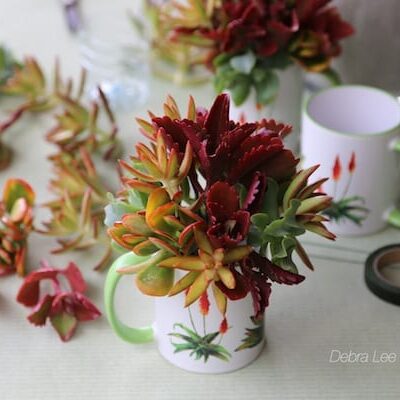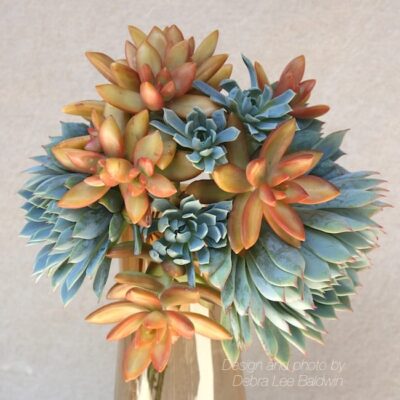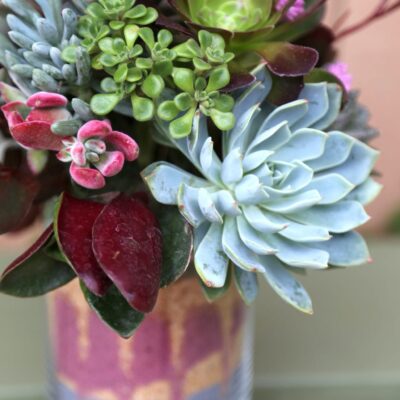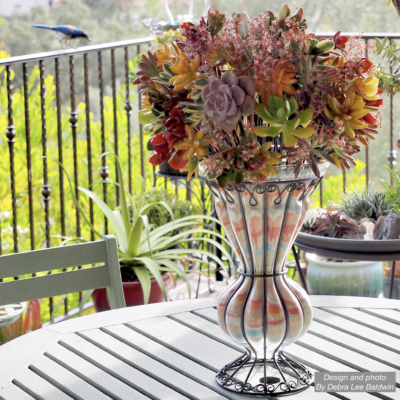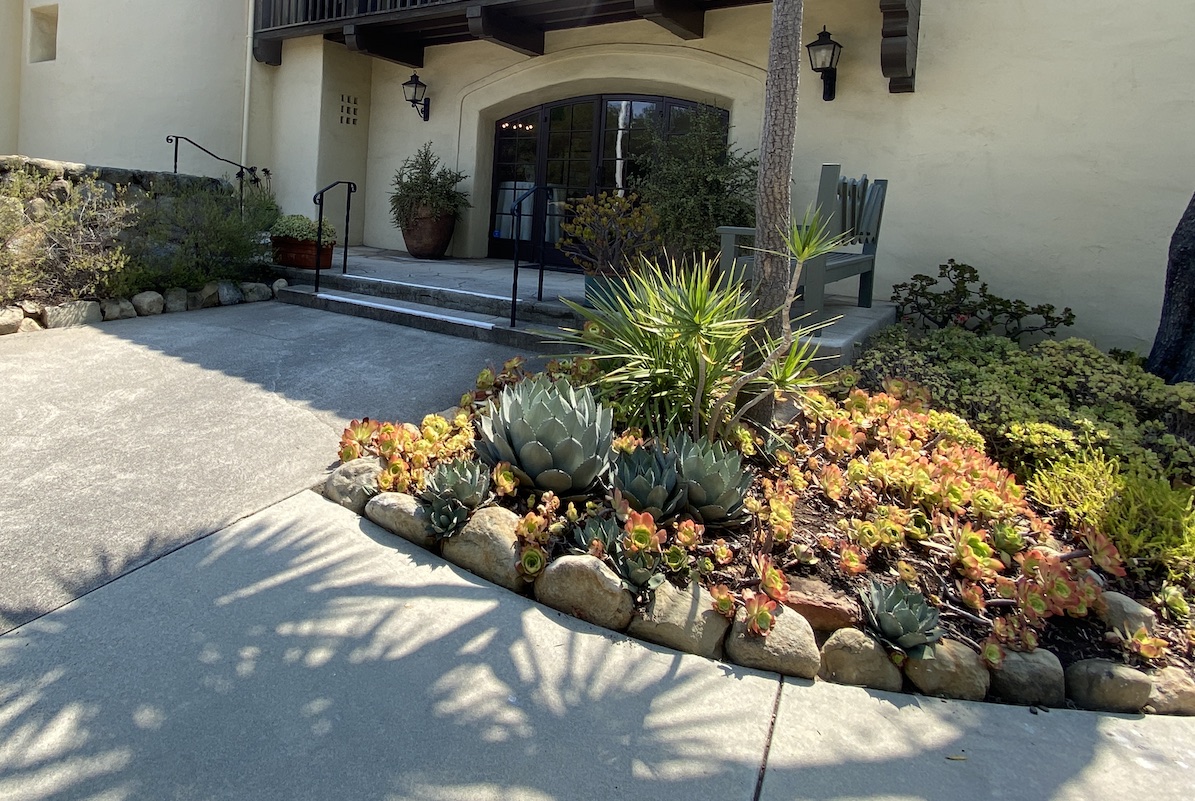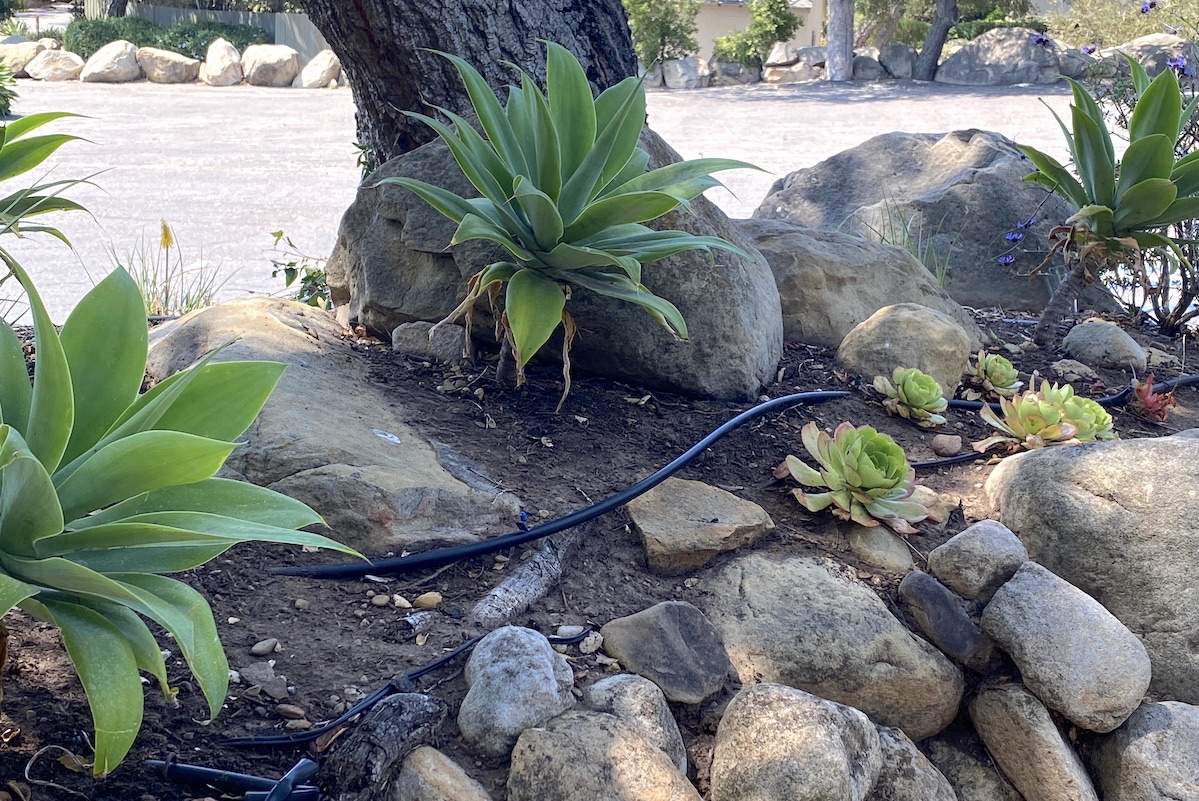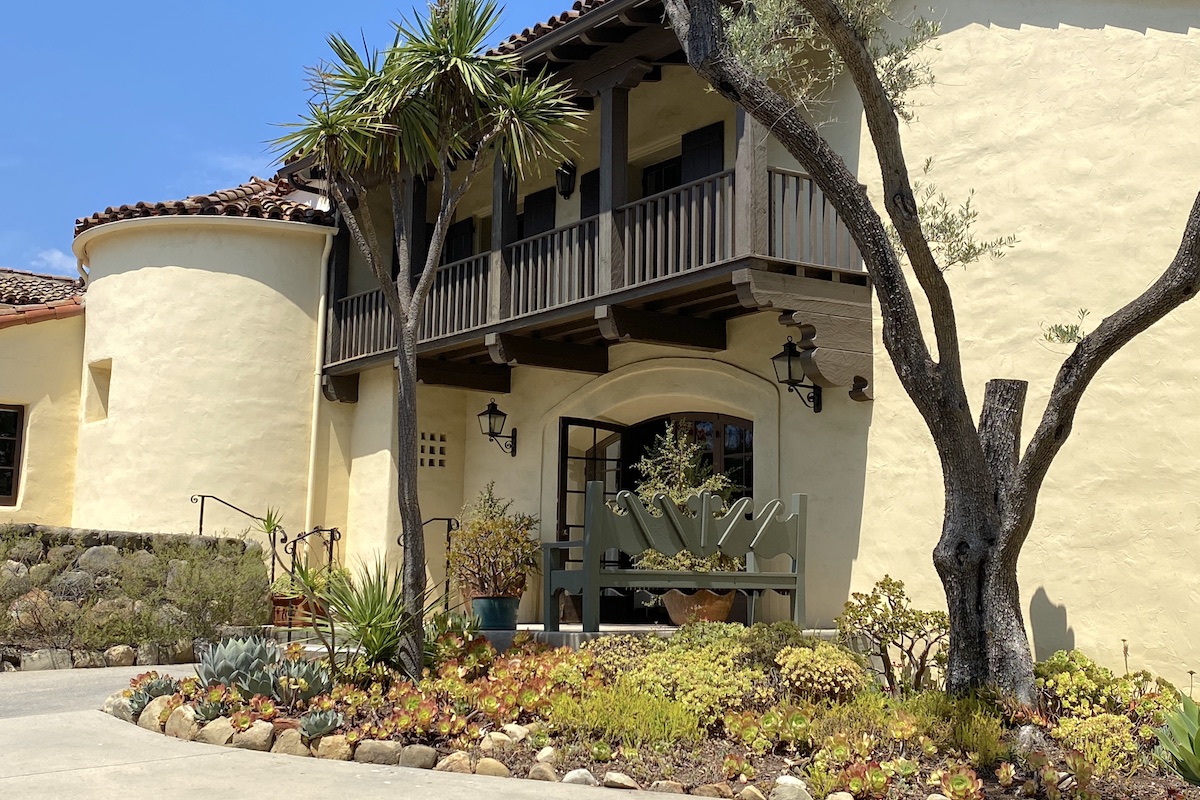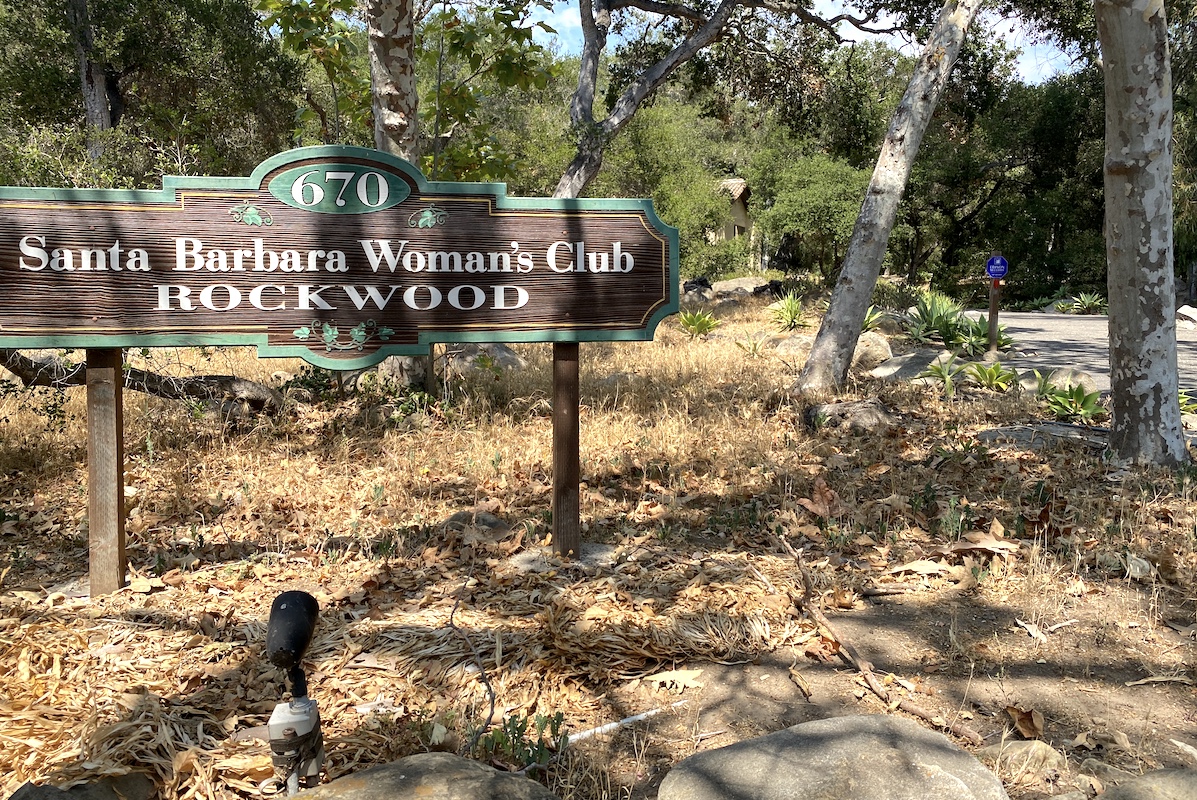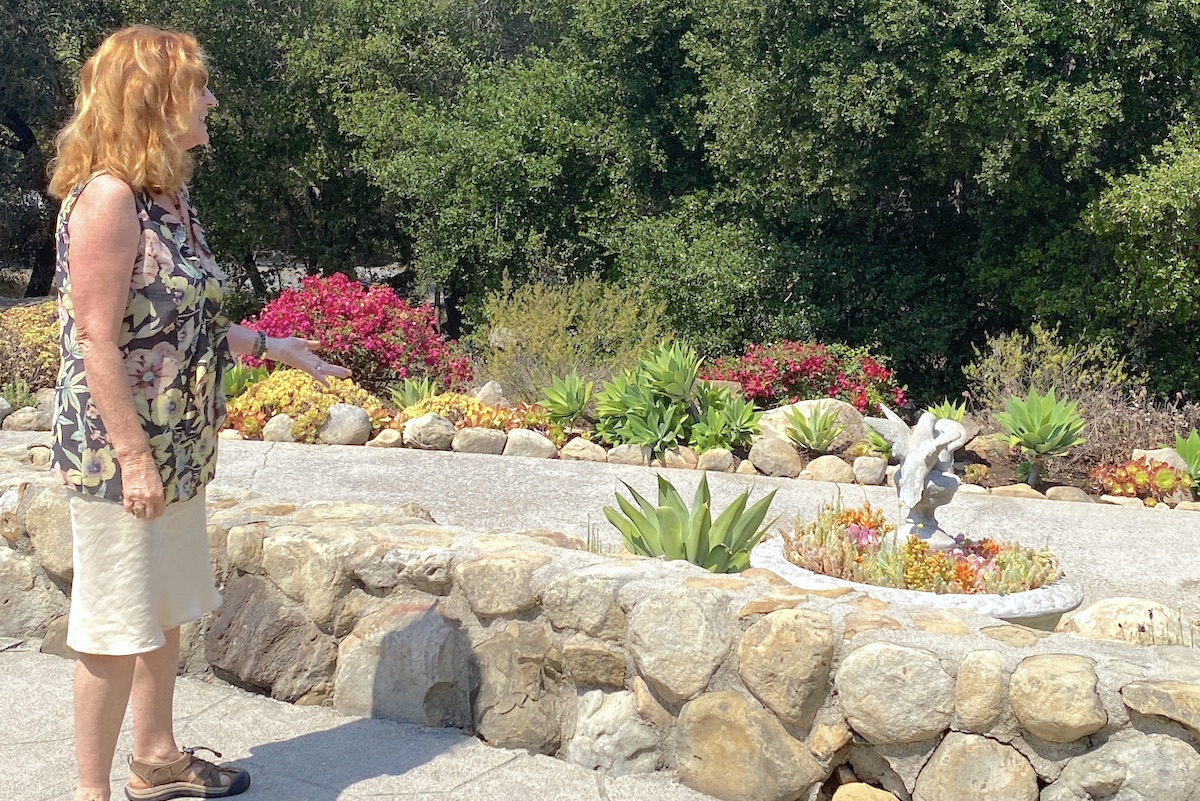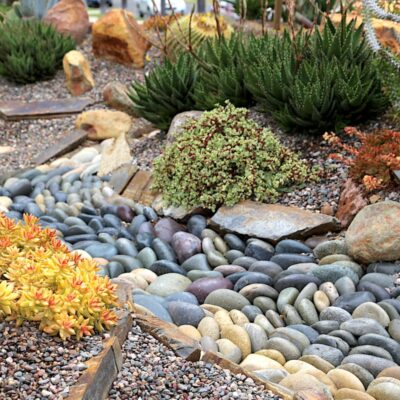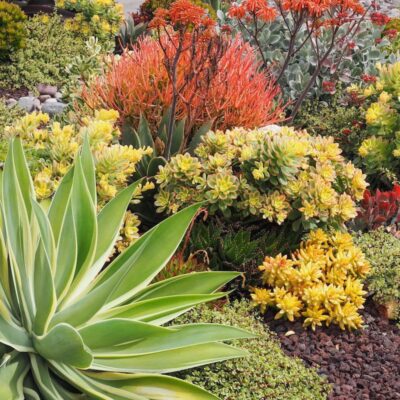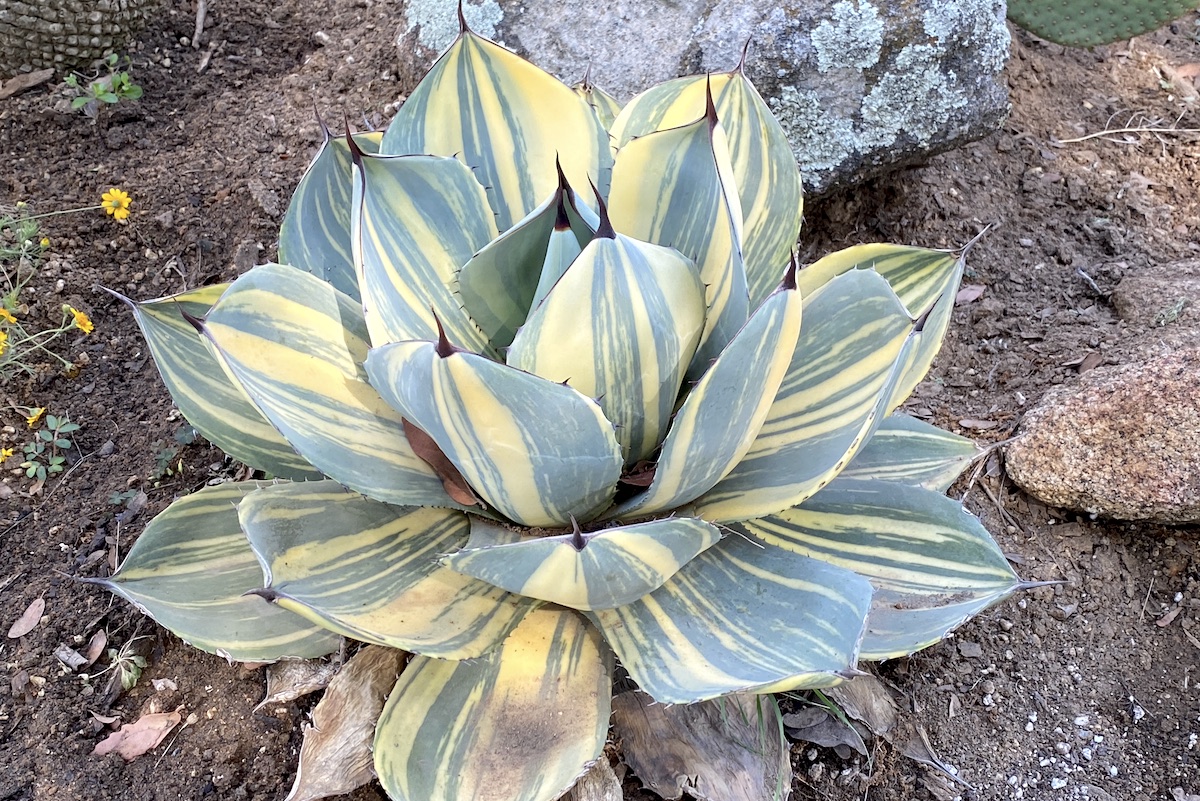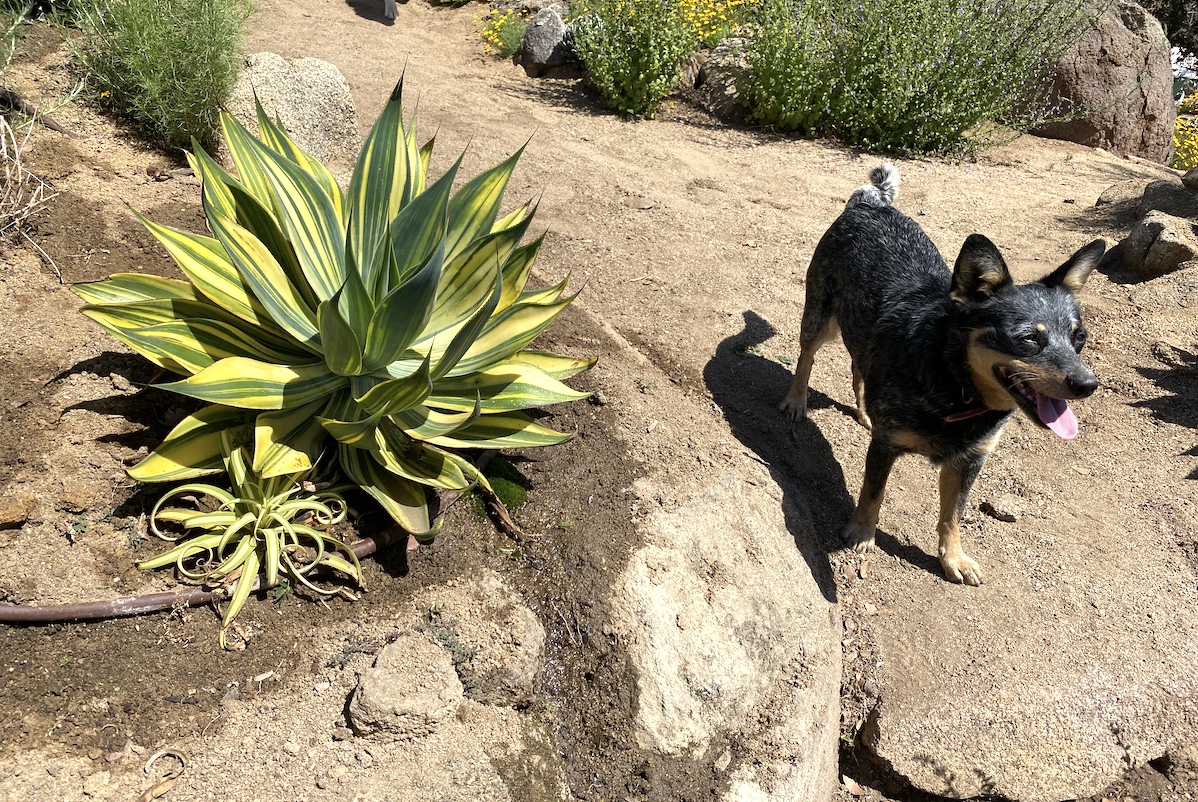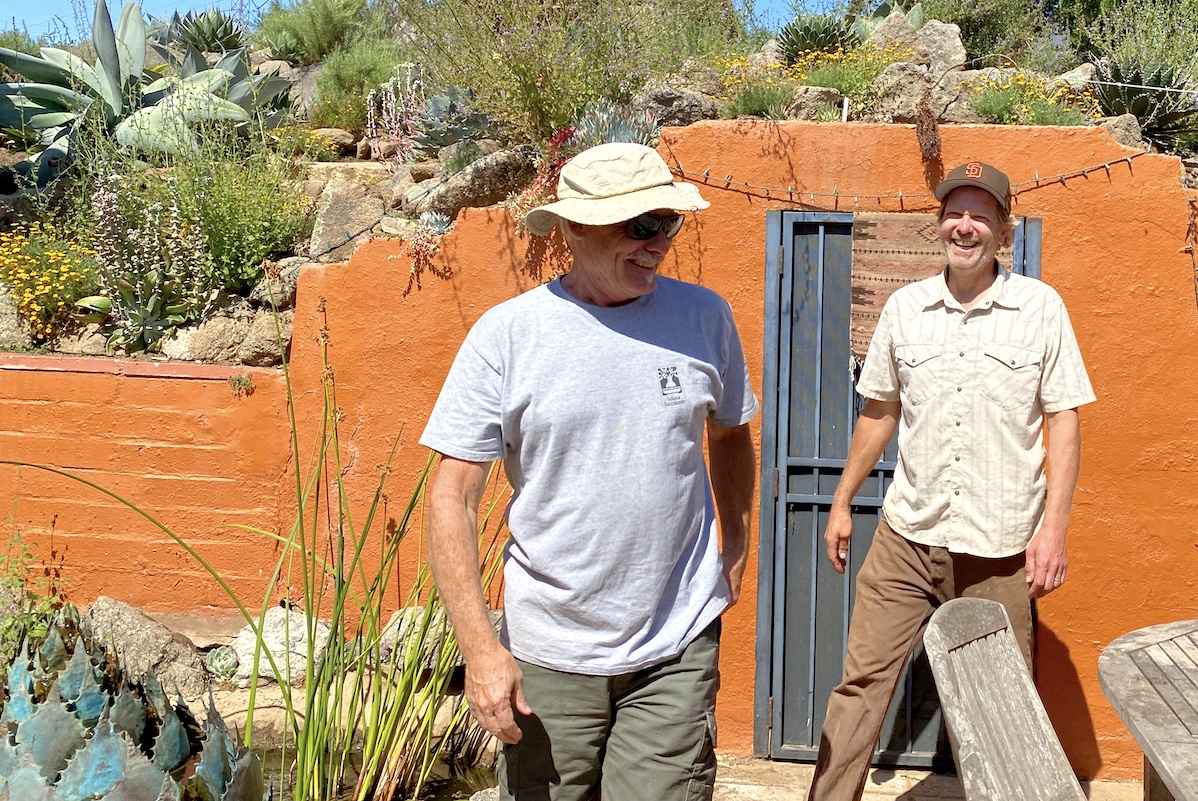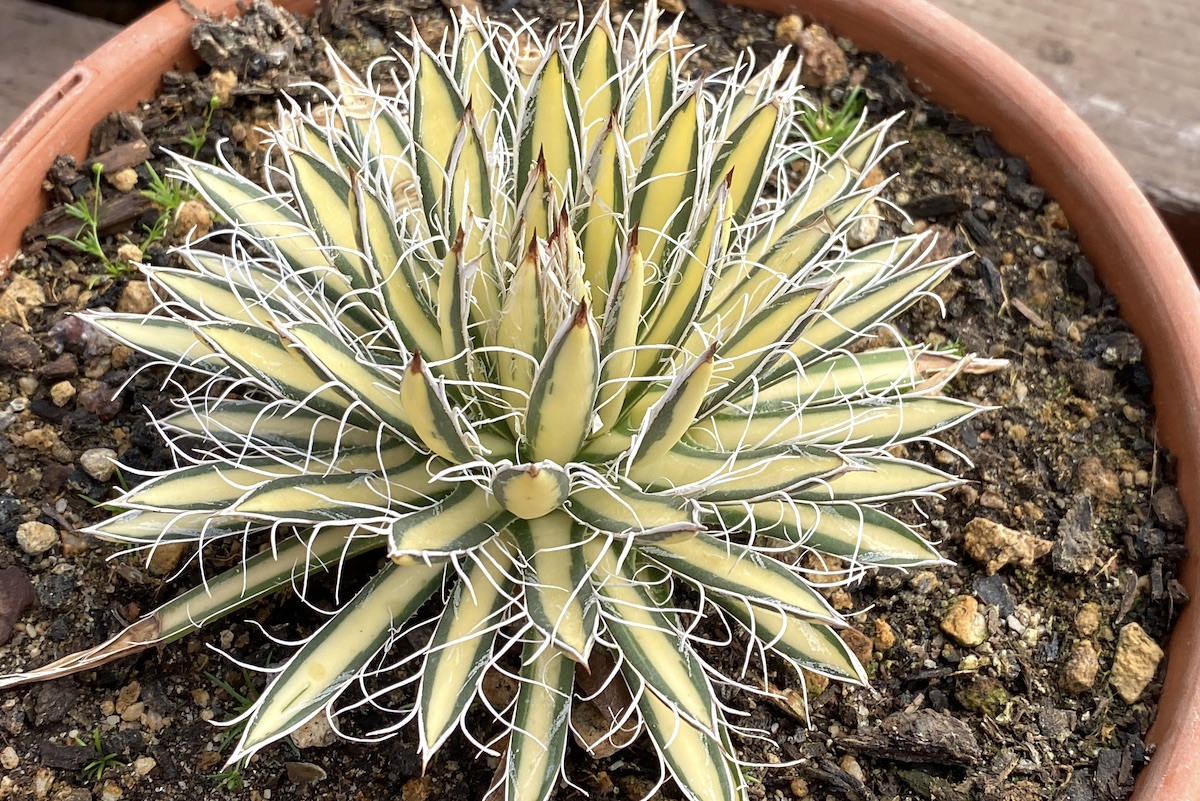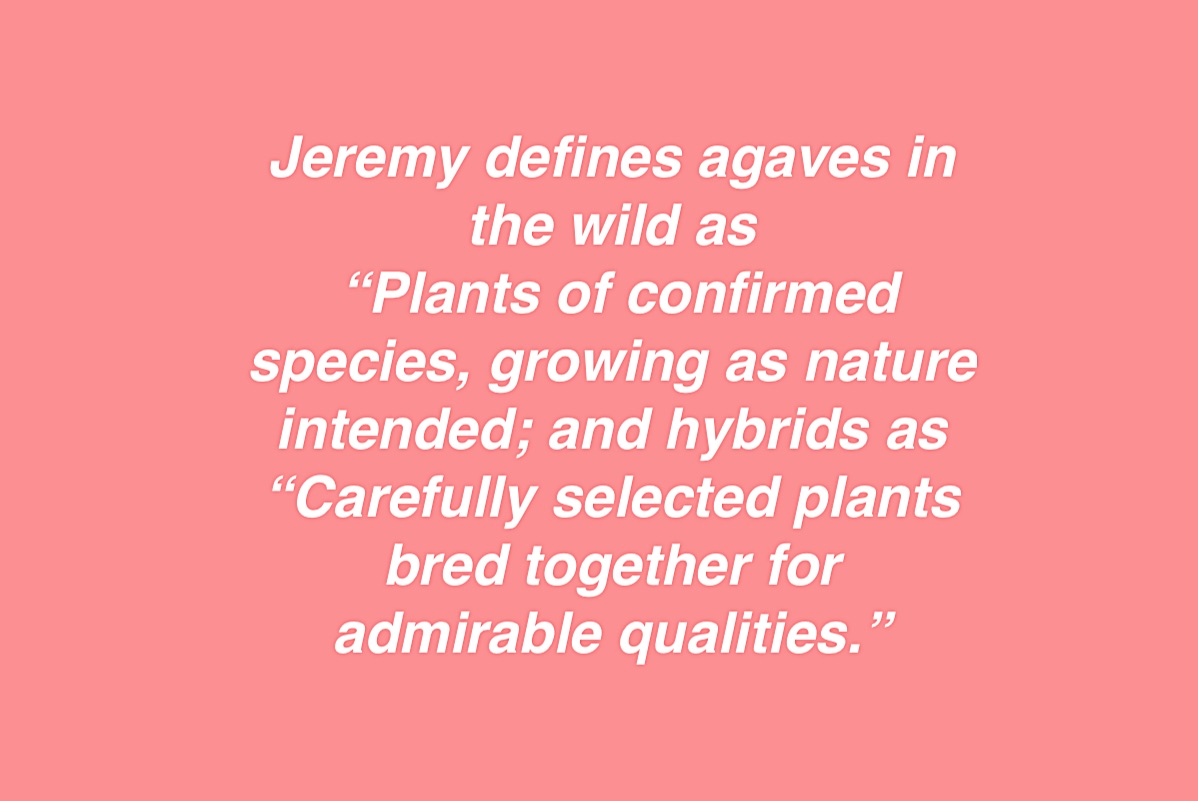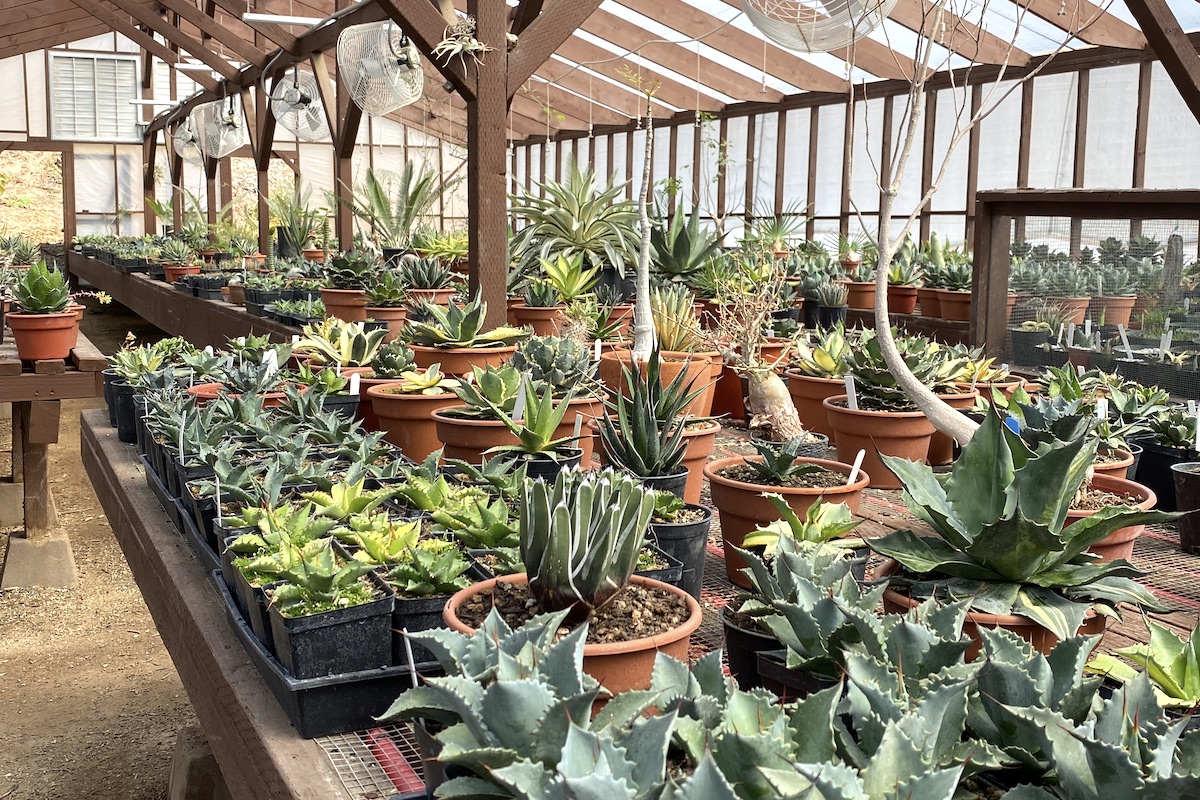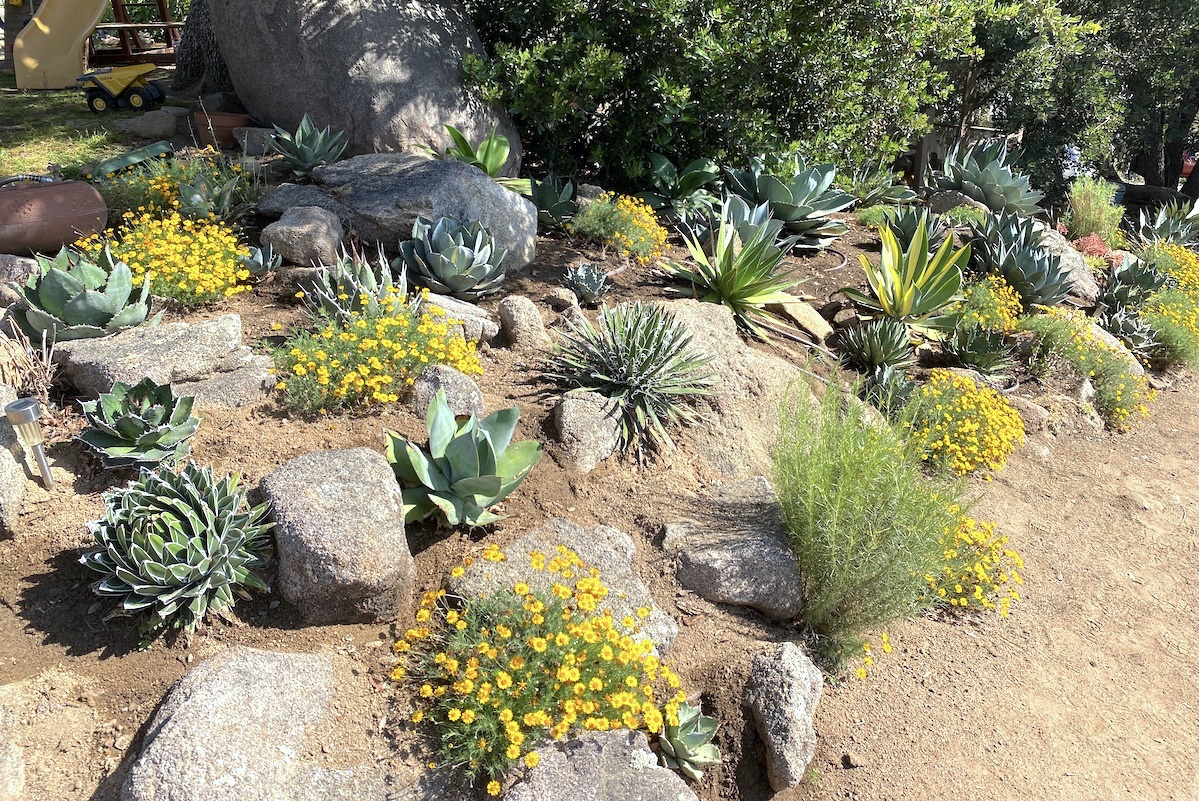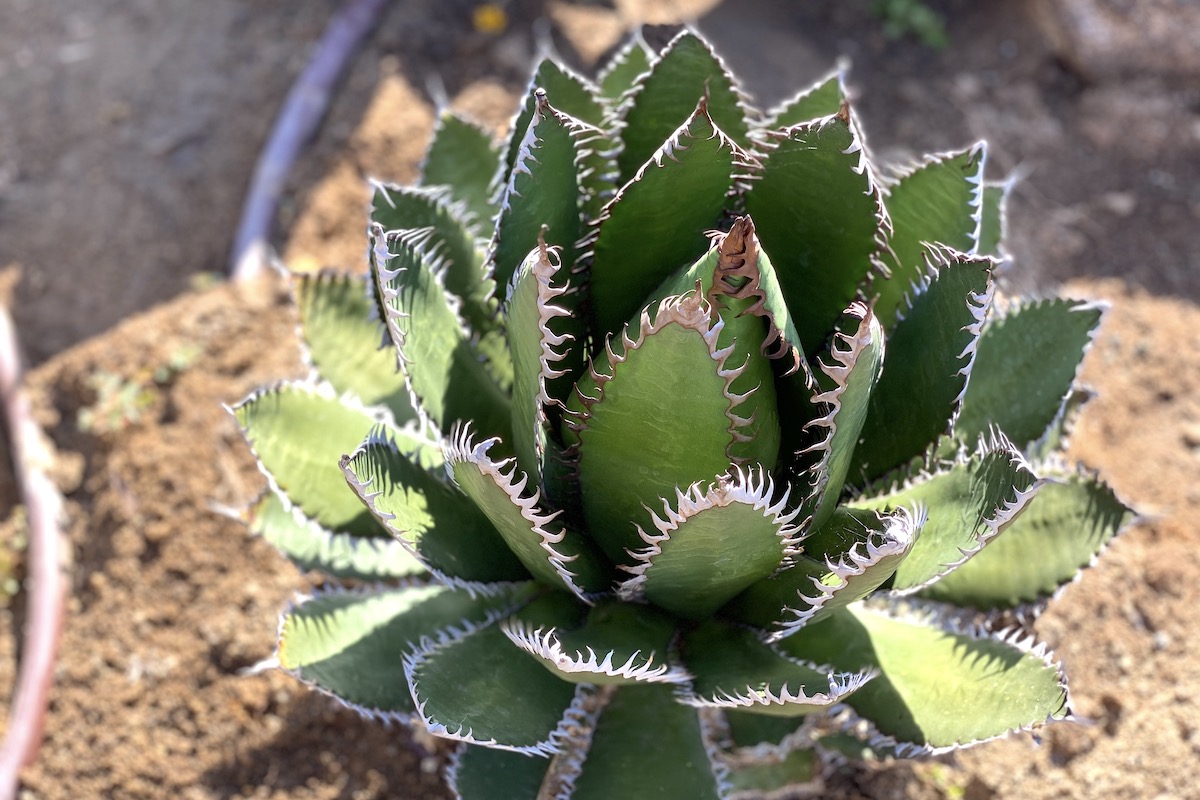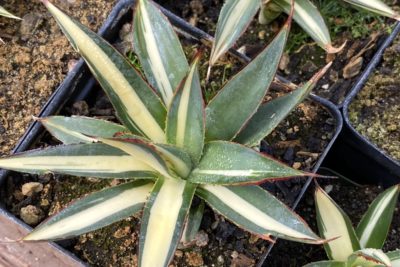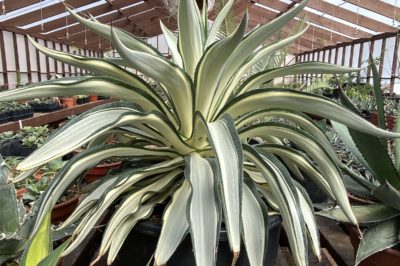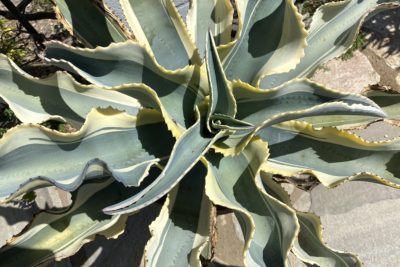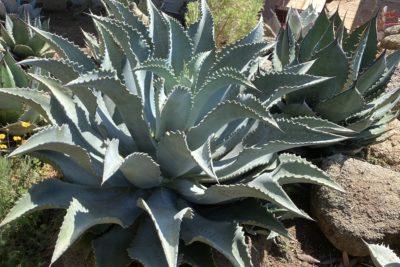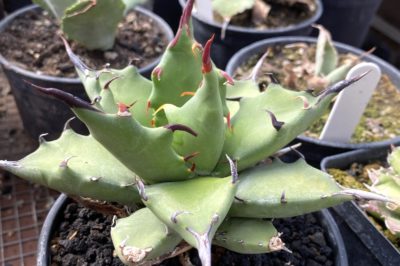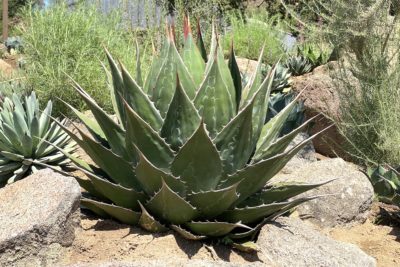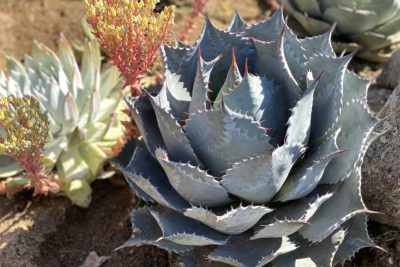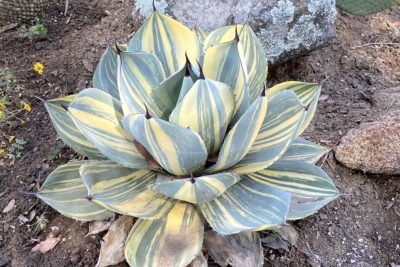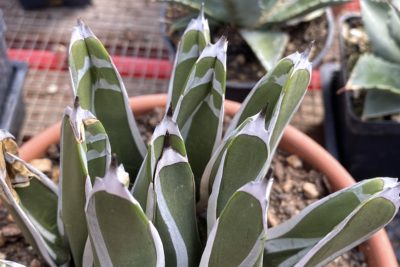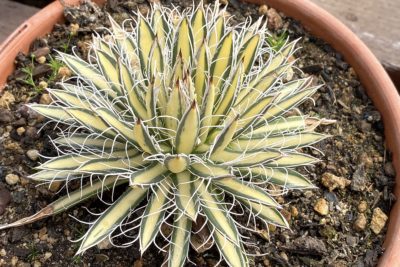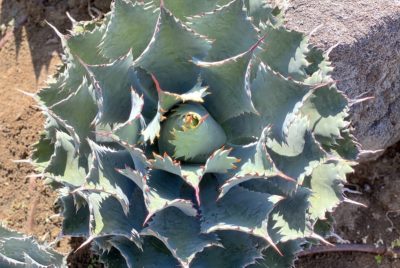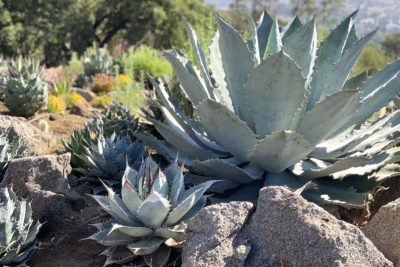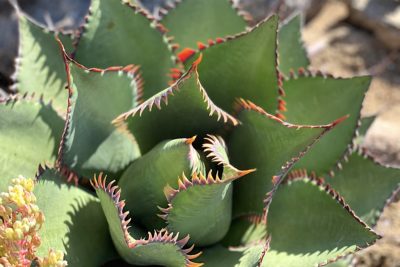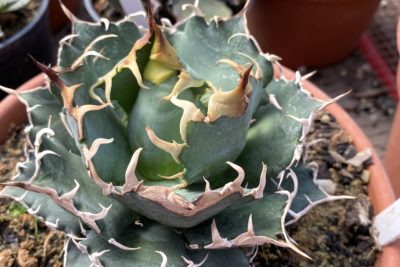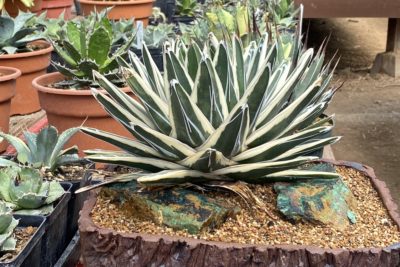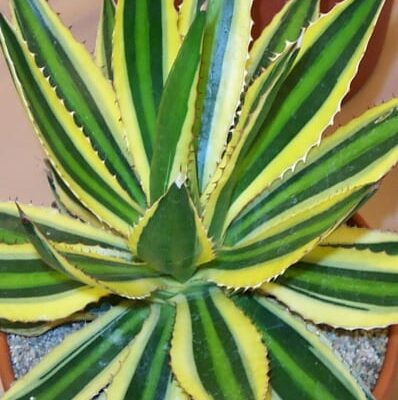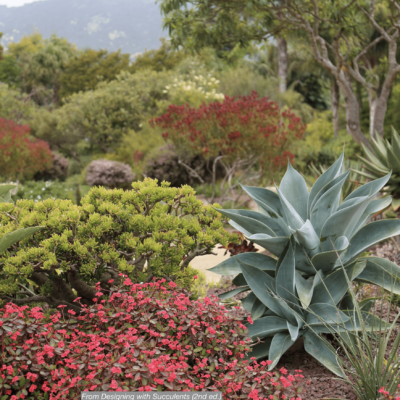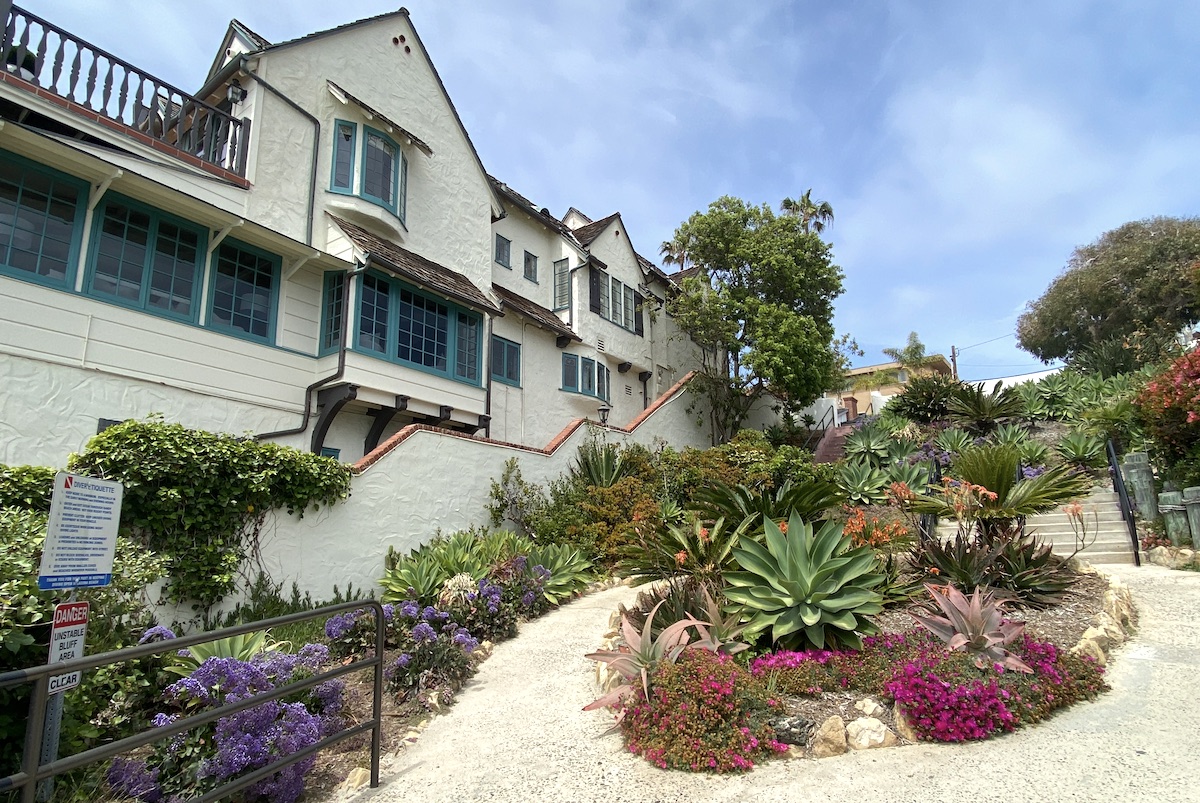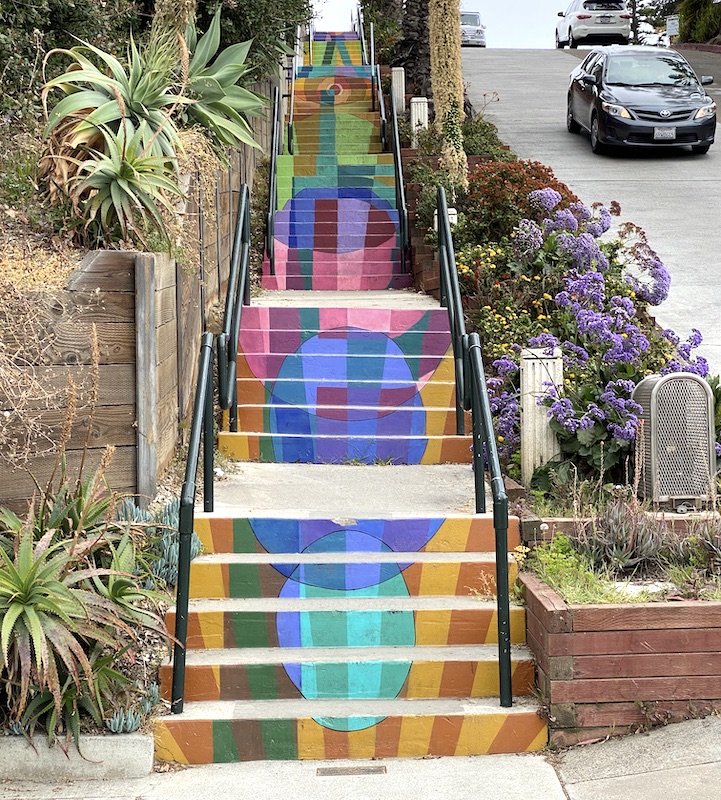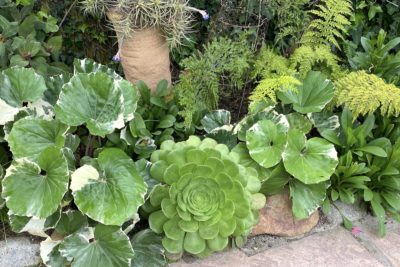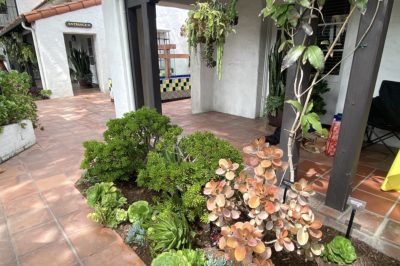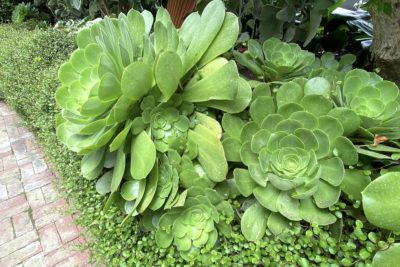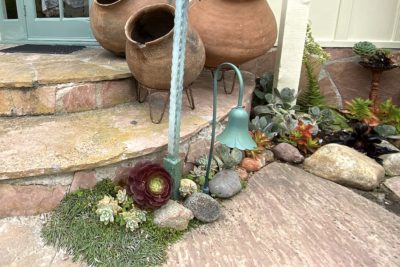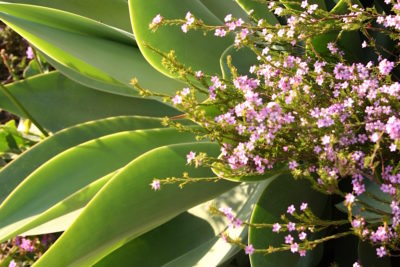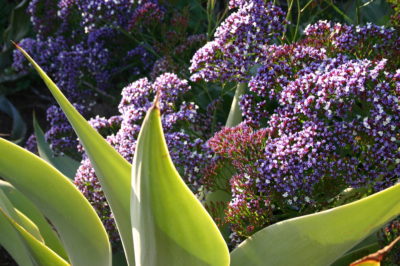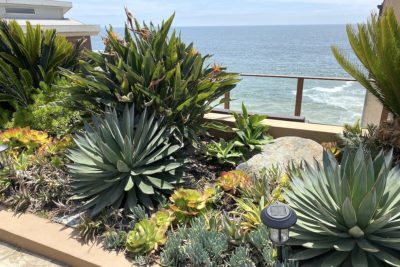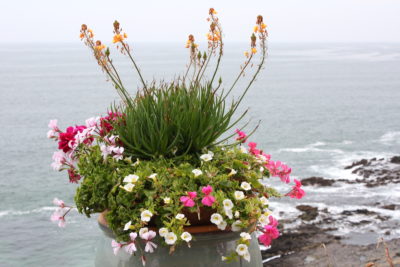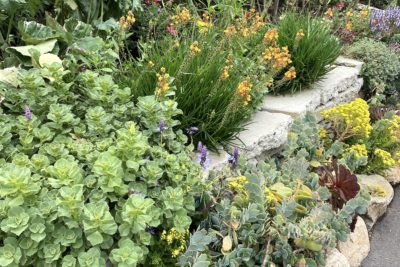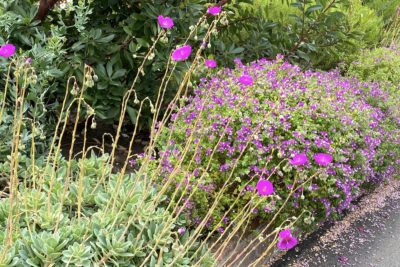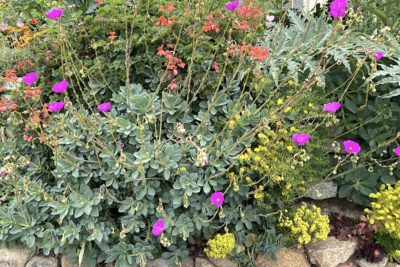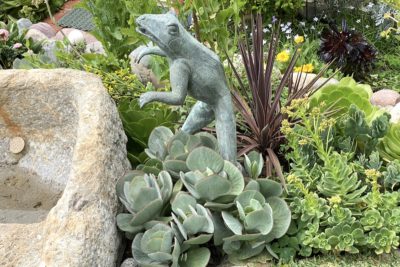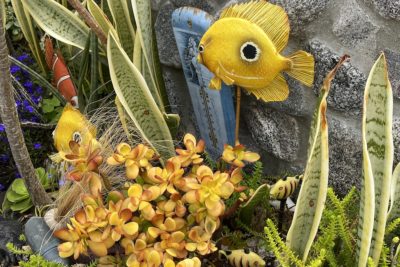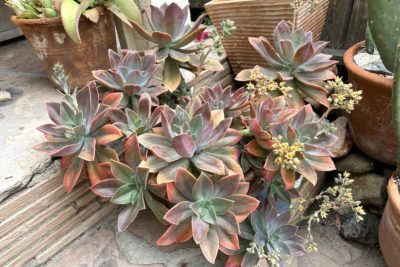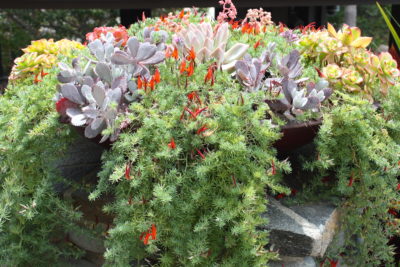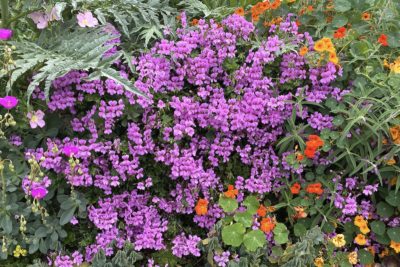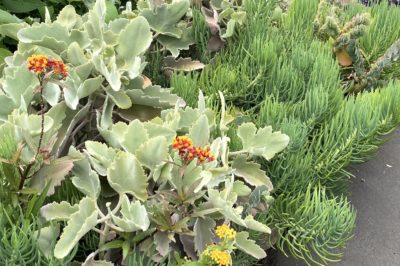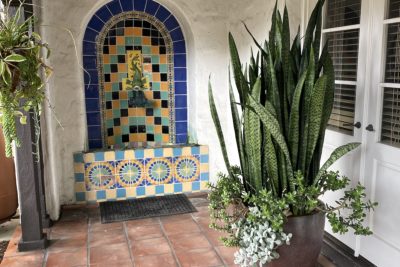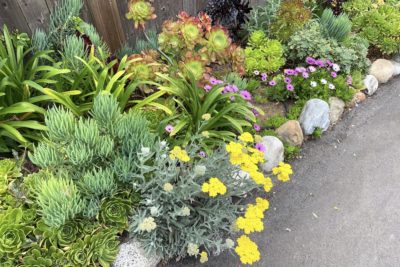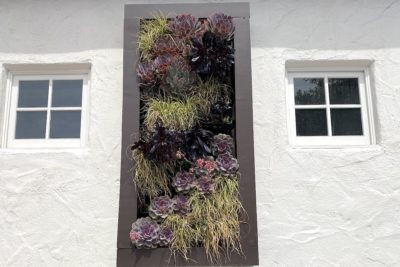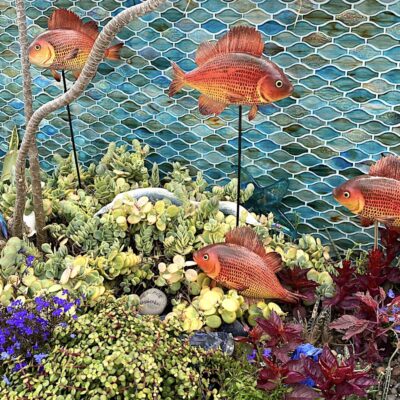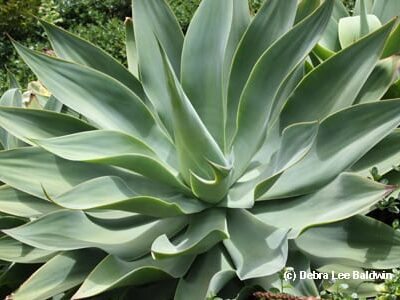With the Fourth of July and Canada Day coming up, why not make your party host a festive bouquet of rosette succulents?
Why Canada Day
I recently spoke via Zoom to a horticultural society in Burlington, Ontario, and wanted to show them a fun, timely succulent project that's doable with only a dozen cuttings. Previously I had made one for the Fourth of July. Above: Canada Day (July 1) colors are red and white.

Fourth of July succulent bouquet
Why succulent rosettes
It's unusual, decorative, festive, shows you care (because you made it yourself), and is a gift that keeps giving. Succulent rosettes wired onto faux stems live off moisture in their leaves, so they last a long time. The recipient can remove the cuttings and plant them. After a few weeks, their bases may even grow aerial roots.
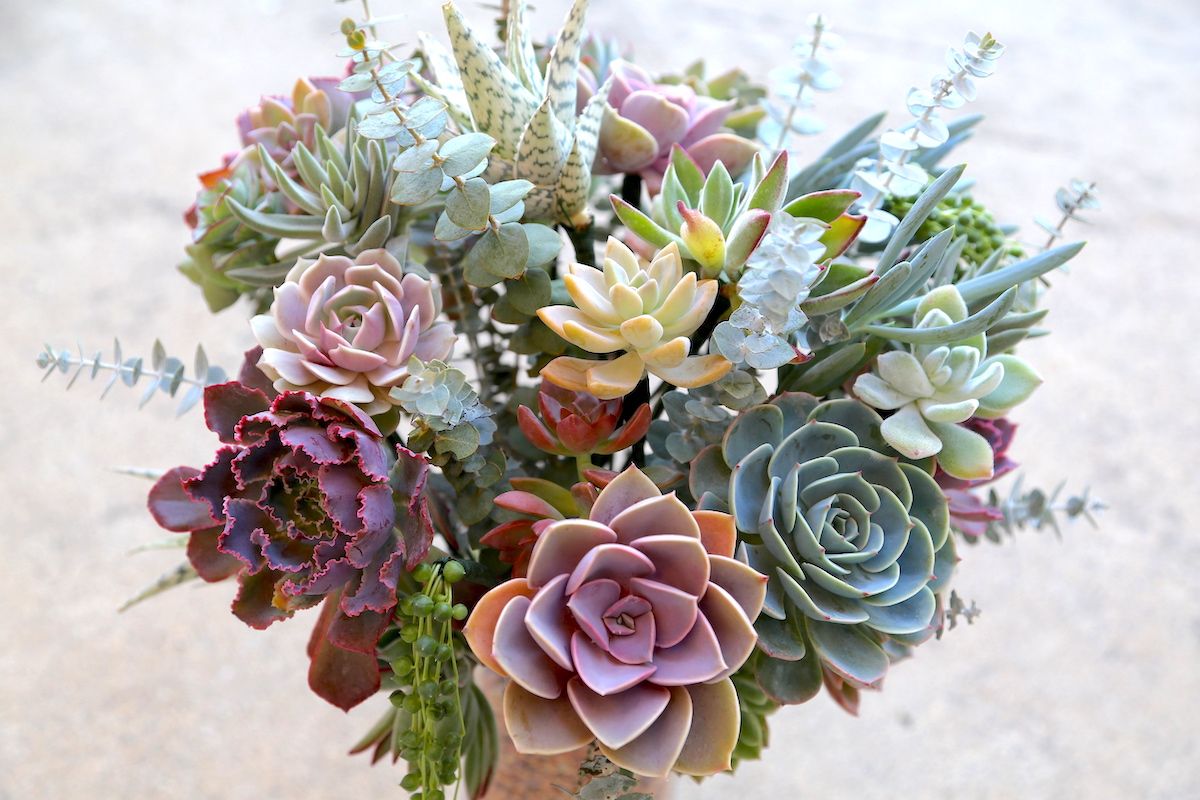
Bouquet of succulent rosettes from my online "Stunning Succulent Arrangements" class
Why colored sand
You certainly don't have to use it, but it looks festive in a glass container, anchors and conceals wire stems, and is a conversation-starter: "Say, those aren't flowers. They're not even in water!"
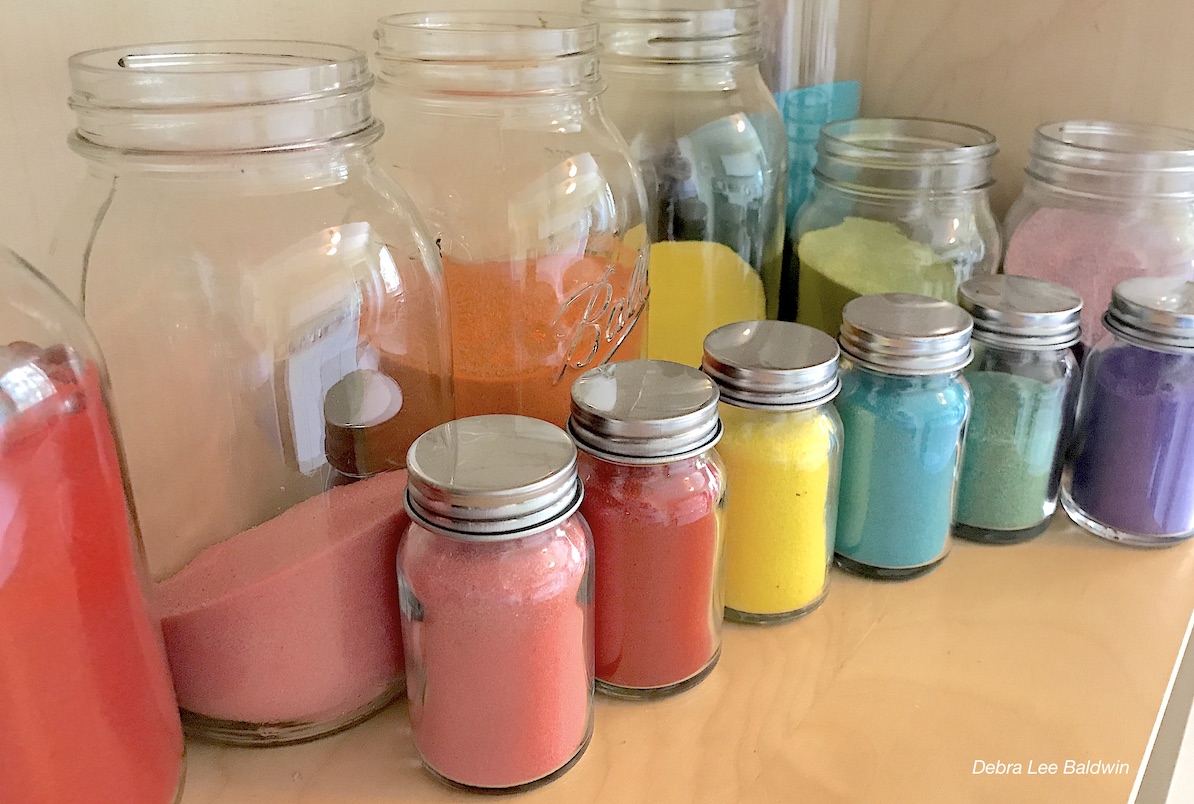
I keep a palette of colored sand handy as ballast for succulent bouquets
Materials
6 to 12 succulent rosettes, with stems about 1/2-in. long, each about the diameter of a pencil
Floral wire: 22-gauge, one 18-in piece per cutting.
Glass jar or vase filled with sand, pebbles or crushed tumbled glass for ballast
Method
Related Info on this site
Make a Succulent Mug Gift Bouquet
Make a succulent mug gift bouquet the next time you need a little something for a friend or hostess. This transcends the traditional flower-stand bouquet and has utility long afterwards.
Make a Bouquet of Succulents
When I need a hostess gift, thank-you present, or an arrangement for a special friend, I make a bouquet of succulents. I start by selecting a coffee mug or glass container (usually a jar, thrift-store vase, or clear bottle), the size of which determines the size of the arrangement. Then I head into the garden with…
12 Succulent Bouquets to Inspire You
12 Succulent Bouquets to Inspire You ~ When wired onto faux stems, succulent rosettes—despite having no roots, soil or water—make long-lasting floral bouquets. Echeverias, graptosedums, crassulas and kalanchoes lend themselves beautifully to bouquets because of their colorful leaves and floral shapes. They’re easy to attach to stems, need no water (because they live off moisture in their leaves), look…
Use Colored Sand for Succulent Bouquets
I like to display bouquets of succulent rosettes in clear glass containers filled with layers of sand. Practical as well as pretty, the sand lends color and interest, and serves as to anchor the stems so top-heavy rosettes don’t tumble out. Succulent sand bouquets make quick and original hostess gifts. Moreover, recipients can remove rosettes from…
The post Give a Festive Bouquet of Rosette Succulents appeared first on Debra Lee Baldwin. Copyright © Debra Lee Baldwin.
from Debra Lee Baldwin https://ift.tt/3h7lZCL
via IFTTT

